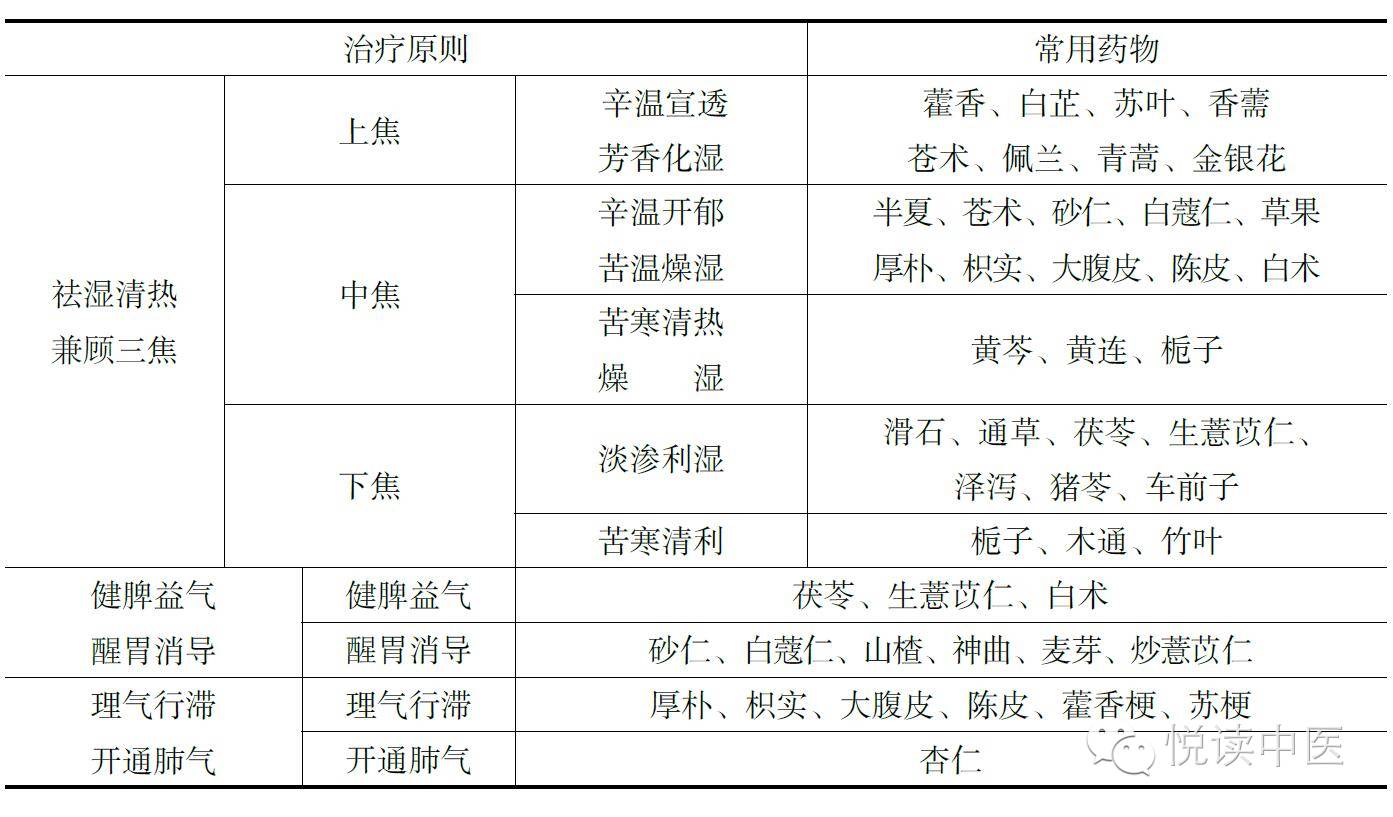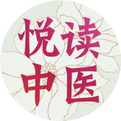Editor’s Note
Damp-heat syndrome is caused by the dual pathogenic factors of dampness and heat, commonly occurring during the rainy season. It generally arises from the simultaneous invasion of both dampness and heat. This condition tends to be prolonged and difficult to resolve, primarily affecting the spleen and stomach, leading to a series of symptoms related to abnormal water metabolism. However, the clinical manifestations often present contradictory symptoms, making it challenging to determine the true cause of the illness. How should damp-heat syndrome be treated, and what are the treatment contraindications? Let’s break it down in the main text!





1. Treatment Principles for Damp-Heat Syndrome





Damp-heat syndrome is caused by the external invasion of damp-heat pathogenic factors, so the fundamental treatment principle is to eliminate dampness and clear heat. Since dampness can easily obstruct the spleen and stomach, hindering the flow of qi, it is also necessary to strengthen the spleen, awaken the stomach, and regulate qi to relieve stagnation during treatment.
1. Eliminate Dampness and Clear Heat
Damp-heat syndrome arises from the simultaneous invasion of dampness and heat, so treatment should address both aspects. Since dampness and heat combine, heat trapped in dampness cannot be cleared unless dampness is eliminated. Therefore, the focus of treatment is on eliminating dampness. Due to the different central locations of damp-heat symptoms in the upper, middle, and lower jiao, the treatment should target the specific area of pathology and select appropriate herbs to guide the pathogenic factors out. Since damp-heat can easily spread throughout the three jiao, treatment must also consider all three jiao. The specific treatment methods for damp-heat syndrome can be summarized into the following five types.
(1) Warm and Aromatic to Disperse, Transform Dampness
This method, known as the warm aromatic dispersing method, is suitable for upper jiao damp-heat symptoms. It involves using warm and aromatic herbs that gently disperse and transform dampness to clear lung qi, open the skin pores, and promote mild sweating, allowing dampness to gradually resolve through slight sweating. Commonly used herbs include: Huo Xiang (Agastache), Bai Zhi (Angelica dahurica), Su Ye (Perilla leaf), Xiang Ru (Elsholtzia), and Cang Zhu (Atractylodes). Although Pei Lan (Eupatorium) and Qing Hao (Artemisia annua) are not warm herbs, they have aromatic and dispersing properties and can also be included in clinical practice, as Wu Jutong stated, “Treat the upper jiao as if it were a feather; it must be lifted lightly”—this is a specific application in the clinical treatment of damp-heat syndrome.
(2) Warm to Open Stagnation, Bitter and Warm to Dry Dampness
This method, known as the warm opening and bitter descending method, is suitable for middle jiao symptoms where dampness is heavier than heat. It involves using warm and bitter herbs that enter the middle jiao to open stagnation and dry dampness, thereby regulating the spleen and stomach to restore balance. Commonly used herbs include Ban Xia (Pinellia), Cang Zhu (Atractylodes), Sha Ren (Amomum), Bai Dou Kou (White cardamom), Cao Guo (Tsaoko), Hou Po (Magnolia bark), Zhi Shi (Bitter orange), Da Fu Pi (Areca peel), Chen Pi (Dried tangerine peel), and Bai Zhu (Atractylodes). This reflects Wu Jutong’s statement, “Treat the middle jiao as if it were a scale; it must be balanced to be stable” in the clinical treatment of damp-heat syndrome.
(3) Bitter Cold to Clear Heat and Dry Dampness
This method is suitable for middle jiao symptoms where dampness and heat are both significant or heat is heavier than dampness. It involves selecting bitter cold herbs to achieve the goal of clearing heat and drying dampness. Commonly used herbs include Huang Qin (Scutellaria), Huang Lian (Coptis), and Zhi Zi (Gardenia). It should be noted that when treating damp-heat syndrome with bitter cold herbs, caution is necessary; they should only be used when heat is heavier than dampness. If dampness and heat are both significant, warm and bitter herbs should be used together with bitter cold herbs to open stagnation and clear heat while drying dampness. If dampness is heavy, bitter cold herbs should be avoided to prevent them from freezing and trapping dampness, making the condition harder to resolve.
(4) Lightly Drain and Promote Urination
This method is suitable for lower jiao damp-heat symptoms, using lightly draining herbs to promote urination and expel damp-heat through urination. Commonly used herbs include Hua Shi (Talc), Tong Cao (Tetrapanax), Fu Ling (Poria), Sheng Yi Yi Ren (Job’s tears), Ze Xie (Alisma), Zhu Ling (Polyporus), and Che Qian Zi (Plantago). If heat is heavier than dampness in the lower jiao, bitter cold herbs that clear heat and promote urination, such as Zhi Zi (Gardenia), Mu Tong (Akebia), and Zhu Ye (Bamboo leaf), can be added to the lightly draining herbs.
(5) Consider All Three Jiao
Since damp-heat can easily spread throughout the three jiao, clinical treatment must not only target the area of pathology but also consider all three jiao. This means treating the upper jiao without neglecting the middle and lower jiao, treating the middle jiao without neglecting the upper and lower jiao, and treating the lower jiao without neglecting the middle and upper jiao. This is why warm aromatic dispersing, warm opening and bitter descending, and lightly draining herbs are often used together in clinical prescriptions.
2. Strengthen the Spleen and Benefit Qi, Awaken the Stomach and Promote Digestion
The spleen governs transportation and transformation, while the stomach governs receiving and descending. In damp-heat syndrome, damp-heat pathogenic factors easily obstruct the spleen and stomach, leading to dysfunction in ascending and descending, as well as impaired digestion and transformation. Therefore, during treatment, it is essential to include herbs that strengthen the spleen and benefit qi, such as Fu Ling (Poria), Sheng Yi Yi Ren (Job’s tears), and Bai Zhu (Atractylodes), as well as herbs that awaken the stomach and promote digestion, such as Sha Ren (Amomum), Bai Dou Kou (White cardamom), Shan Zha (Hawthorn), Shen Qu (Fermented wheat), Mai Ya (Barley sprout), and Chao Yi Yi Ren (Fried Job’s tears).
3. Regulate Qi and Relieve Stagnation, Open Lung Qi
Heavy dampness is sticky and obstructive, easily hindering the flow of qi. When qi is not smooth, the water pathways cannot function, and dampness cannot be expelled. Therefore, it is necessary to include herbs that regulate qi and relieve stagnation to promote the smooth flow of qi, allowing dampness to follow. Commonly used herbs include Hou Po (Magnolia bark), Zhi Shi (Bitter orange), Da Fu Pi (Areca peel), Chen Pi (Dried tangerine peel), Huo Xiang (Agastache), and Su Ye (Perilla leaf). The lungs govern the regulation of water pathways; when lung qi is open, the water pathways are unobstructed, allowing damp-heat pathogenic factors to be expelled. Therefore, herbs that open lung qi, such as Xing Ren (Apricot kernel), are often included in the treatment of damp-heat syndrome. Additionally, warm aromatic dispersing herbs also have the function of opening lung qi.
The treatment principles and commonly used herbs for damp-heat syndrome can be summarized in the table below.
Damp-Heat Syndrome Treatment Principles and Commonly Used Herbs





2. Treatment Contraindications for Damp-Heat Syndrome





In treating damp-heat syndrome, it is essential to understand the treatment methods as well as the contraindications to prevent the occurrence of complications due to incorrect treatment.
1. Avoid Excessive Sweating
When damp-heat pathogenic factors invade the upper jiao, obstructing the skin pores, it is advisable to use warm aromatic dispersing herbs to open the skin pores, allowing for slight sweating to help resolve the pathogenic factors. However, strong warming herbs like Ma Huang (Ephedra) and Gui Zhi (Cinnamon twig) should be avoided. This is because dampness is sticky and difficult to eliminate quickly; only slight sweating can gradually expel it. Using Ma Huang or Gui Zhi may lead to excessive sweating, which not only fails to expel dampness but may also exacerbate heat and dampness, causing the pathogenic factors to invade the heart and obstruct the clear orifices, leading to symptoms such as confusion, deafness, and closed eyes. As Wu Jutong stated, “Excessive sweating leads to confusion and deafness, and in severe cases, closed eyes and unwillingness to speak.”
2. Avoid Strong Laxatives
Damp-heat pathogenic factors obstruct the gastrointestinal tract, causing qi stagnation. Therefore, it is advisable to avoid using strong cold laxatives like Da Huang (Rhubarb) and Mang Xiao (Mirabilite). This is because dampness is sticky and cannot be expelled with a single attack; using such laxatives may not only fail to expel dampness but also damage the spleen yang, leading to persistent diarrhea. As Wu Jutong stated, “Using strong laxatives leads to excessive diarrhea.”
3. Avoid Nourishing Herbs
In damp-heat syndrome, symptoms such as afternoon fever and thirst often occur due to dampness, not due to yin deficiency. If misdiagnosed as yin deficiency and nourishing herbs like Sheng Di Huang (Rehmannia) or Mai Dong (Ophiopogon) are used, it may lead to further dampness and exacerbate the condition. As Wu Jutong stated, “Nourishing leads to deeper unresolved illness.”
4. Avoid Warming Tonics
Dampness is a yin pathogen that can easily damage yang qi. During the course of damp-heat syndrome, dampness obstructs qi, leading to symptoms such as pale yellow complexion, cold extremities, and fatigue. This is due to dampness obstructing qi, not due to deficiency-cold. If misdiagnosed as yang deficiency and warming tonics like Dang Shen (Codonopsis) or Huang Qi (Astragalus) are used, it may lead to further obstruction of the spleen and stomach, exacerbating damp-heat and worsening the condition. As Ye Tianshi stated, “Do not hastily use tonics for deficiency-cold, for the fire may still be smoldering beneath the ashes.”
5. Dietary and Lifestyle Considerations
During the course of damp-heat syndrome and its recovery period, the spleen and stomach are sluggish, and the diet should be light and easily digestible. Foods that are sweet, sticky, greasy, cold, or hard should be avoided to prevent further damage to the spleen and stomach, which could exacerbate damp-heat or lead to food stagnation.
Patients who have just recovered from damp-heat syndrome should be cautious as their bodily functions have not fully restored. They should be careful with their activities, avoid cold, and keep warm, ensuring they do not overexert themselves or expose themselves to wind and cold to prevent relapse or catching a cold.
New Media Editor:Wang Dan
Warm Reminder:Want to get the book “<Wen Bing Tiao Bian> Simplified Discussion“? Click at the end of the articleRead the original textShop freely!

Copyright Statement: This article is selected from “<Wen Bing Tiao Bian> Simplified Discussion” (Published by China Traditional Chinese Medicine Press, authored by Liu Jingyuan), with all rights reserved by the original author. Recommended for publication by Yue Du Zhong Yi (WeChat ID: ydzhongyi), cover image sourced from the internet. Unauthorized reproduction is prohibited!


